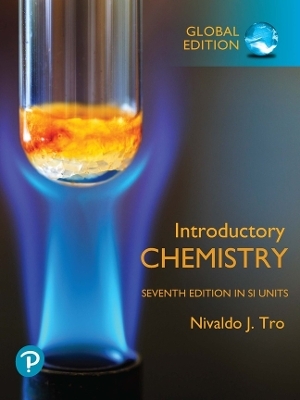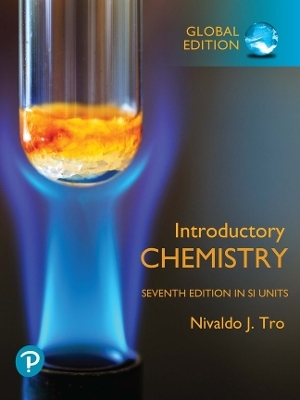
Mössbauer Effect in Lattice Dynamics – Experimental Techniques and Applications
Wiley-VCH Verlag GmbH (Hersteller)
978-3-527-61142-3 (ISBN)
- Keine Verlagsinformationen verfügbar
- Artikel merken
This up to date review closes an important gap in the literature by providing a comprehensive description of the Mossbauer effect in lattice dynamics, along with a collection of applications in metals, alloys, amorphous solids, molecular crystals, thin films, and nanocrystals. It is the first to systematically compare Mossbauer spectroscopy using synchrotron radiation to conventional Mossbauer spectroscopy, discussing in detail its advantages and capabilities, backed by the latest theoretical developments and experimental examples.Intended as a self contained volume that may be used as a complete reference or textbook, it adopts new pedagogical approaches with several non traditional and refreshing theoretical expositions, while all quantitative relations are derived with the necessary details so as to be easily followed by the reader. Two entire chapters are devoted to the study of the dynamics of impurity atoms in solids, while a thorough description of the Mannheim model as a theoretical method is presented and its predictions compared to experimental results.
Finally, an in depth analysis of absorption of Mossbauer radiation is presented, based on recent research by one of the authors, resulting in an exact expression of fractional absorption, otherwise unavailable in the literature. The whole is supplemented by elaborate appendices containing constants and parameters.
Yi-Long Chen is a full professor and head of the Mossbauer Spectroscopy Laboratory in the Physics Department of Wuhan University in Wuhan, China. He graduated in 1961 from Kharkov National University in Kharkov, Ukraine. His research interests include Mossbauer effect and its applications as well as nuclear electronics. He has authored and co-authored about 30 research papers on Mossbauer spectroscopy in addition to other publications. Professor Chen is a member of the Chinese Physical Society and the National Professional Committee of Mossbauer Spectroscopy. De-Ping Yang is the department chair and associate professor of physics at the College of the Holy cross in Worcester, Massachusetts. He received his Ph.D. in experimental condensed matter physics from the University of Connecticut in 1988, and joined the Holy Cross faculty in 1994. His research activities are mostly related to hyperfine interactions using nuclear magnetic resonance and Mossbauer spectroscopy in materials ranging from magnetic materials and nonstructured alloys to model membranes for biological systems. Professor Yang also works as an adjunct professor at Northeastern University in Boston and is a member of the American Physical Society and Phi Beta Kappa.
Preface.1 The Mossbauer Effect.1.1 Resonant Scattering of g-Rays.1.2 The Mossbauer Effect.1.2.1 Compensation for Recoil Energy.1.2.2 The Discovery of the Mossbauer Effect.1.3 The Mossbauer Spectrum.1.3.1 The Measurement of a Mossbauer Spectrum.1.3.2 The Shape and Intensity of a Spectral Line.1.4 The Classical Theory.1.5 The Quantum Theory.1.5.1 Coherent States of a Harmonic Oscillator.1.5.2 Gamma Radiation from a Bound Nucleus.1.5.3 Mossbauer Effect in a Solid.1.5.4 Average Energy Transferred.References.2 Hyperfine Interactions.2.1 Electric Monopole Interaction.2.1.1 A General Description.2.1.2 The Isomer Shift.2.1.3 Calibration of Isomer Shift.2.1.4 Isomer Shift and Electronic Structure.2.2 Electric Quadrupole Interaction.2.2.1 Electric Quadrupole Splitting.2.2.2 The Electric Field Gradient (EFG).2.2.2.1 Sources of EFG.2.2.2.2 Temperature Effect on EFG.2.2.3 Intensities of the Spectral Lines.2.2.4 The Sign of EFG.2.3 Magnetic Dipole Interaction.2.3.1 Magnetic Splitting.2.3.2 Relative Line Intensities.2.3.3 Effective Magnetic Field 532.4 Combined Quadrupole and Magnetic Interactions.2.5 Polarization of g-Radiation.2.5.1 Polarized Mossbauer Sources.2.5.2 Absorption of Polarized g-Rays.2.6 Saturation Effect in the Presence of Hyperfine Splittings.2.7 Mossbauer Spectroscopy.References.3 Experimental Techniques.3.1 The Mossbauer Spectrometer.3.2 Radiation Sources.3.3 The Absorber.3.3.1 Estimation of the Optimal Thickness.3.3.2 Sample Preparation.3.4 Detection and Recording Systems.3.4.1 Gas Proportional Counters.3.4.2 NaI(Tl) Scintillation Counters.3.4.3 Semiconductor Detectors.3.4.4 Reduction and Correction of Background Counts.3.4.5 Geometric Conditions.3.4.6 Recording Systems.3.5 Velocity Drive System.3.5.1 Velocity Transducer.3.5.2 Waveform Generator.3.5.3 Drive Circuit and Feedback Circuit.3.5.4 Velocity Calibration.3.5.4.1 Secondary Standard Calibration.3.5.4.2 Absolute Velocity Calibration.3.6 Data Analysis.3.6.1 Fitting Individual Lorentzian Lines.3.6.1.1 Spectra from Crystalline Samples.3.6.1.2 Spectra from Amorphous Samples.3.6.2 Full Hamiltonian Site Fitting.3.6.3 Fitting Thick Absorber Spectra.References.4 The Basics of Lattice Dynamics.4.1 Harmonic Vibrations.4.1.1 Adiabatic Approximation.4.1.2 Harmonic Approximation.4.1.3 Force Constants and Their Properties.4.1.4 Normal Coordinates.4.2 Lattice Vibrations.4.2.1 Dynamical Matrix.4.2.2 Reciprocal Lattice and the Brillouin Zones.4.2.2.1 Reciprocal Lattice.4.2.2.2 Brillouin Zones.4.2.3 The Born-von Karman Boundary Condition.4.2.4 Acoustic and Optical Branches.4.2.5 Longitudinal and Transverse Waves.4.2.6 Models of Interatomic Forces in Solids.4.3 Quantization of Vibrations: The Phonons.4.4 Frequency Distribution and Thermodynamic Properties.4.4.1 The Lattice Heat Capacity.4.4.2 The Density of States.4.4.2.1 The Einstein Model.4.4.2.2 The Debye Model.4.4.3 Moments of Frequency Distribution.4.4.4 The Debye Temperature yD.4.4.4.1 The Physical Meaning of yD.4.4.4.2 Comparison of Results from Various Experimental Methods.4.5 Localized Vibrations.4.6 Experimental Methods for Studying Lattice Dynamics.4.6.1 Neutron Scattering.4.6.1.1 Theory.4.6.1.2 Neutron Scattering by a Crystal.4.6.2 X-ray Scattering.4.7 First-Principles Lattice Dynamics.4.7.1 Linear Response and Lattice Dynamics.4.7.2 The Density-Functional Theory.4.7.3 Exchange-Correlation Energy and Local-Density Approximation.4.7.4 Plane Waves and Pseudopotentials.4.7.5 Calculation of DOS in Solids.References.5 Recoilless Fraction and Second-Order Doppler Effect.5.1 Mean-Square Displacement hu2i and Mean-Square Velocity hv2i.5.2 Temperature Dependence of the Recoilless Fraction f.5.3 The Anharmonic Effects.5.3.1 The General Form of the Recoilless Fraction f.5.3.2 Calculating the Recoilless Fraction f Using the Pseudoharmonic Approximation.5.3.3 Low-Temperature Anharmonic Effect.5.4 Pressure Dependence of the Recoilless Fraction f.5.5 The Goldanskii-Karyagin Effect.5.5.1 Single Crystals.5.5.2 Polycrystals.5.6 Second-Order Doppler Shift.5.6.1 Transverse Doppler Effect.5.6.2 The Relation between f and dSOD.5.7 Methods for Measuring the Recoilless Fraction f.5.7.1 Absolute Methods.5.7.2 Relative Methods.References.6 Mossbauer Scattering Methods.6.1 The Characteristics and Types of Mossbauer g-ray Scattering.6.1.1 The Main Characteristics.6.1.2 Types of Scattering Processes.6.2 Interference and Diffraction.6.2.1 Interference between Nuclear Resonance Scattering and Rayleigh Scattering.6.2.2 Observation of Mossbauer Diffraction.6.3 Coherent Elastic Scattering by Bound Nuclei.6.3.1 Nuclear Resonance Scattering Amplitude.6.3.2 Coherent Elastic Nuclear Scattering.6.3.2.1 Scattering Amplitude.6.3.2.2 Nuclear Bragg Scattering (NBS).6.3.2.3 Nuclear Forward Scattering (NFS).6.3.2.4 Scattering Cross-Sections.6.3.3 Lamb-Mossbauer Factor and Debye-Waller Factor.6.4 Rayleigh Scattering of Mossbauer Radiation (RSMR).6.4.1 Basic Properties of RSMR.6.4.2 Separation of Elastic and Inelastic Scatterings.6.4.3 Measuring Dynamic Parameters Using RSMR.6.4.3.1 The Fixed Temperature Approach.6.4.3.2 The Variable Temperature Approach.6.4.4 RSMR and Anharmonic Effect.6.4.4.1 Using Strong Mossbauer Isotope Sources.6.4.4.2 Using Higher Temperature Measurements.References.7 Synchrotron Mossbauer Spectroscopy.7.1 Synchrotron Radiation and Its Properties.7.1.1 The Angular Distribution of Radiation.7.1.2 The Total Power of Radiation.7.1.3 The Frequency Distribution of Radiation.7.1.4 Polarization.7.2 Synchrotron Mossbauer Sources.7.2.1 The meV Bandwidth Sources.7.2.2 The meV Bandwidth Sources.7.3 Time Domain Mossbauer Spectroscopy.7.3.1 Nuclear Exciton.7.3.2 Enhancement of Coherent Channel.7.3.3 Speed-Up of Initial Decay.7.3.4 Nuclear Forward Scattering of SR.7.3.5 Dynamical Beat (DB).7.3.6 Quantum Beat (QB).7.3.7 Distinctions between Time Domain and Energy Domain Methods.7.3.8 Measurement of the Lamb-Mossbauer Factor.7.4 Phonon Density of States.7.4.1 Inelastic Nuclear Resonant Scattering.7.4.2 Measurement of DOS in Solids.7.4.3 Extraction of Lamb-Mossbauer Factor, SOD Shift, and Force7.5 Synchrotron Methods versus Conventional Methods.References.8 Mossbauer Impurity Atoms (I).8.1 Theory of Substitutional Impurity Atom Vibrations.8.1.1 The General Method.8.1.2 Mass Defect Approximation.8.1.2.1 Resonance Modes.8.1.2.2 Localized Modes.8.2 The Mannheim Model.8.3 Impurity Site Moments.8.3.1 The Einstein Model.8.3.2 The Einstein-Debye Model.8.3.3 The Maradudin-Flinn Model.8.3.4 The Visscher Model.8.3.5 The Mannheim Model.8.4 Examples of Mossbauer Studies of 57Fe, 119Sn, and 197Au Impurities.8.4.1 57Fe Impurity Atoms.8.4.2 119Sn Impurity Atoms.8.4.3 197Au Impurity Atoms.8.5 Interstitial Impurity Atoms.8.5.1 57Fe Impurities in Au.8.5.2 57Fe Impurities in Diamond.References.9 Mossbauer Impurity Atoms (II).9.1 Metals and Alloys.9.1.1 Metals.9.1.2 Alloys.9.1.2.1 The b-Ti(Fe) Alloy.9.1.2.2 CuaZn Alloy (Brass).9.2 Amorphous Solids.9.2.1 The Alloy YFe2.9.2.2 The Alloy Fe80B20.9.3 Molecular Crystals.9.3.1 The Concept of Effective Vibrating Mass Meff.9.3.2 Vibrational DOS in Molecular Crystals.9.3.2.1 The Mode Composition Factor e2(l, j).9.3.2.2 An Example.9.4 Low-Dimensional Systems.9.4.1 Thin Films.9.4.2 Nanocrystals.References.Appendices.Appendix A Fractional Intensity e(v) and Area A(ta).Appendix B Eigenstate Calculations in Combined Interactions.B.1 Electric Quatrupole Perturbation.B.2 The Coefficients ai,mg and bj,me.Appendix C Force Constant Matrices (F) in fcc and bcc Lattices.Appendix D Nearest Neighbors Around a Substitutional Impurity.Appendix E Force Constants for Central Forces.Appendix F Lattice Green's Function.F.1 Definition of Green's Function.F.2 The Real and Imaginary Parts of G.F.3 Symmetry Properties of the G-Matrices.F.4 The Mean Square Displacement hu2(0)i and the Recoilless Fraction f.F.5 Relations Between Different Green's Functions Gab(l l0,w).Appendix G Symmetry Coordinates.Appendix H Mass Absorption Coefficients.Copyright Acknowledgments.Subject Index.
| Verlagsort | Weinheim |
|---|---|
| Sprache | englisch |
| Maße | 170 x 240 mm |
| Gewicht | 958 g |
| Themenwelt | Naturwissenschaften ► Chemie |
| Naturwissenschaften ► Physik / Astronomie | |
| Technik ► Maschinenbau | |
| ISBN-10 | 3-527-61142-8 / 3527611428 |
| ISBN-13 | 978-3-527-61142-3 / 9783527611423 |
| Zustand | Neuware |
| Haben Sie eine Frage zum Produkt? |
aus dem Bereich


